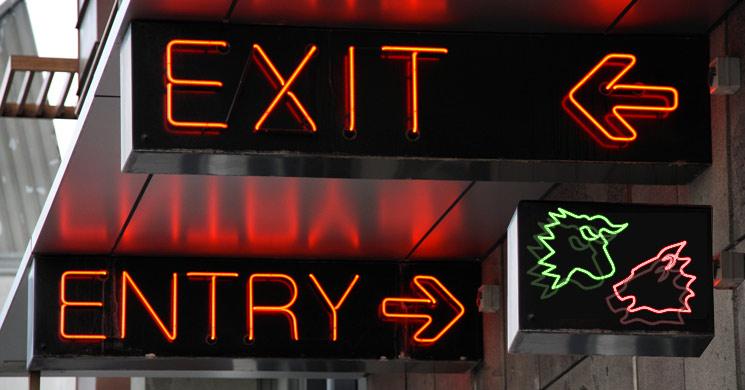
Over the years I have received many email messages from Kitco readers asking about how to best determine market entry and exit strategies in trading. Here are just a few of their quotes:
"Though my success rate has been high, I am only breaking even financially, due to getting out too early in profit and letting my losses run too far."
"Many articles are written showing when and where to enter trades--but how many articles are written about 'running' positions? Where to exit surely has to be the biggest key to trading success!"
"I would appreciate some advice or tips on how to and when to enter a market and when to exit."
Of course, if a trader knew exactly when to get into a market and when to get out, wouldn't trading be easy! But even the most successful traders in the world can't do that. The best they can strive for is to catch a bigger part of any price move (trend) in the market, and then get out with a decent profit before the market turns against them.
I've written past articles on trading with the trend and not against it, on the perils of trying to pick tops and bottoms, on support and resistance, and on letting profits run and cutting losses short, as well as trading the "breakouts." I won't repeat all those trading tenets here, but if you've missed some of my articles, they are here on the Kitco Metals website’s trader education section.
In this feature, I'll get more specific on entries and exits, and what to do if you are in a trade and are accumulating profits or absorbing losses.
First of all, if you are in a trade, you should already have a general plan of action in place, including potential entry and exit points, before you entered the trade. Certainly, you can alter your plan of action in the heat of battle, but you should not enter any trade without having a well-thought-out trading plan. Also, in your trading plan, you can have a few scenarios that could occur and what you would do if they did occur.
Entry and exits points in trades most times should be based on some type of chart support or resistance levels in a market. I won't go long (buy) a market just because I think it's close to a bottom. I need to first see some strength in the market. I will wait for the contract to push up through a resistance level and begin a fledgling uptrend. Then, if I do go long, I'll set my sell stop just below a support level that's not too far below the market. And if the trend does not develop and the market turns back south, I'm stopped out for a loss that's not too painful. Or, in a down-trending market I would enter a trade on a price move below a nearby technical support level.
See below an example of entering a trade on a move below chart support in a market that is trending lower.
Another way to enter a market that is trending (preferably just beginning to trend) is to wait for a minor pullback in an uptrend or an upside correction in a downtrend. Markets don't go straight up or straight down, and there are minor corrections within a trend that offer good entry points. The key is to try to determine if it is indeed just a correction and not the end of the trend.
On when to get out of a market when you're losing money, I have a simple, yet very effective answer: Upon entering the trade, if you place a sell stop below the market if you're long (buy stop if you're short), you know right away approximately how much money you will lose in any given trade. You should never trade without employing actual stops (in futures markets) or mental stops in the cash market. Thus, you should never be in a trade and have a losing position and not know where your exit point is going to be.
I prefer setting tighter protective stops because I'm a conservative trader and want to survive financially to trade another day. Yes, I'll get stopped out sometimes and then right away the market will turn in the direction I had planned. However, by setting tighter stops, I will not be in a position whereby I lose substantial money because I'm fighting the market, "hoping" it will soon turn in my favor.
What about when you've got a winner going and good profits already in place? This is the time to employ "trailing stops." For example, if you're long a market and it reaches your initial upside profit objective, but now you really think there may be more upside and you don't want to exit your trade. You put in a sell stop at a certain level below the market that allows you to stay in the winning trade. But if the market turns south you are stopped out and still have a decent profit.
I can't tell traders exactly at what percentage below the market (above the market if they are short) they should set stops or trailing stops, because all markets are different at different times, and traders have different views on how much money they can stand to lose. However, a general rule of thumb is to place stops and trailing stops just below a support level that's not too far below the market. (If you're short, place the buy stops not too far above the market.)
Read more by Jim Wyckoff







